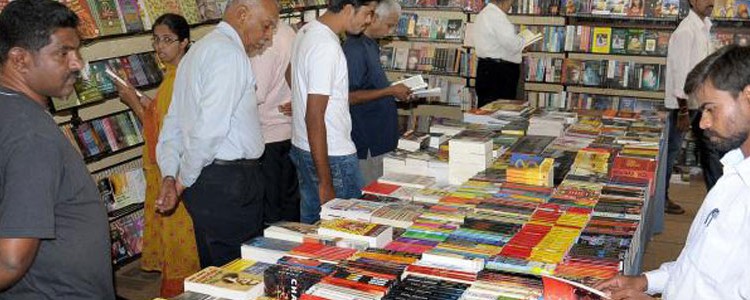Literati – “A look at the world of books, publishing and writers” ( 2 June 2014)
 My monthly column, Literati, in the Hindu Literary Review was published online ( 31 May 2014) and in print ( 1 June 2014). Here is the url http://www.thehindu.com/books/literary-review/literati/article6069748.ece?textsize=small&test=2 . I am also c&p the text below.
My monthly column, Literati, in the Hindu Literary Review was published online ( 31 May 2014) and in print ( 1 June 2014). Here is the url http://www.thehindu.com/books/literary-review/literati/article6069748.ece?textsize=small&test=2 . I am also c&p the text below.
In translation
I am reading a terrific cluster of books — Rakhshanda Jalil’s A Literary History of the Progressive Writer’s Movement in Urdu (OUP); A Rebel and her Cause: The life of Dr Rashid Jahan, (Women Unlimited); and two simultaneous publications of the English translation of Angaarey — nine stories and a play put together in Urdu by Sajjad Zahir in 1932 (Rupa Publications and Penguin Books). Angaarey includes contributions by PWM members such as Ahmed Ali, Rashid Jahan and Mahmuduzzafar. As Nadira Babbar, Sajjad Zahir’s daughter says in her introduction to the Rupa edition: “The young group of writers of Angaarey challenged not just social orthodoxy but also traditional literary narratives and techniques. In an attempt to represent the individual mind and its struggle, they ushered in the narrative technique known as the stream of consciousness which was then new to the contemporary literary scene and continues to be significant in literature even today. …they saw art as a means of social reform.” She says that her father did not consider the writing of Angaarey and the subsequent problems they faced as any kind of hardship or sacrifice; rather “it provided them with the opportunity of expressing truths simply felt and clearly articulated.” It is curious that at a time when publishers worry about the future of the industry, there are two translations of the same book from two different publishers.
Translations are a way to discover a new socio-cultural and literary landscape. Last month, the English translation of Joel Dicker’s debut novel The Harry Quebert Affair (MacLehose Press), which has created one of the biggest stirs in publishing, was released. A gripping thriller, originally in French, it has sold over two million copies in other languages. A look at some other notable translations published recently:
Mikhail Shashkin’s disturbing but very readable Maidenhair (Open Letter), translated from Russian by Marian Schwartz, about asylum-seekers in Switzerland.
Juan Pablo Villalobos’s Quesadillas (And Other Stories) translated from Spanish by Rosalind Harvey is about 1980s Mexico.
Roberto Bolano’s The Insufferable Gaucho (Picador), a collection of short stories, translated from Spanish by Chris Andrews.
There is a range of European writers to be discovered in English translation on the Seagull Books list, Indian regional language writers from Sahitya Akademi, NBT, Penguin Books India, OUP, HarperCollins, Zubaan, Hachette, Navayana, Stree Samya, and Yatra Books.
Oxford University Press’s Indian Writing programme and the Oxford Novellas series are broader in their scope including works translated from Dogri and Konkani and looking at scripts from Bhili and Tulu.
Translations allow writers of the original language to be comfortable in their own idiom, socio-political milieu without carrying the baggage of other literary discourses. Translated literature is of interest to scholars for its cultural and literary value and, as Mini Krishnan, Series Editor, Oxford Novellas, writes, “the distinctive way they carry the memories and histories of those who use them”. Making the rich content available is what takes precedence. Within this context, debates about the ethics of publishing a translation such as J.R.R. Tolkien’s 1926 prose translation of Beowulf (HarperCollins), 88 years later, seem to be largely ignored though Tolkein described it as being “hardly to my liking”.
***
Linguistic maps available at http://www.muturzikin.com/ show the vast number of languages that exist apart from English. In the seven states of northeast of India alone there are 42 documented languages. Reports such as http://w3techs.com/technologies/overview/content_language/ all indicate that content languages (all though with strong literary traditions) such as Hindi, Marathi, Sanskrit, Punjabi and even Irish are used by less than one per cent of websites. Google India estimates that the next 300 million users from India won’t use English. It isn’t surprising then to discover that Google announced the acquisition of Word Lens, an app which can translate a number of different languages in real time. For now users can translate between English and Portuguese, German, Italian, French, Russian, and Spanish. Indian languages may be underrepresented on the Internet but, with digital media support and the rapid acceptance of unicode, an encoding which supports Indic fonts, translations will become easier. Soon apps such as Word Lens may expand to include other languages, probably even circumventing the need of publishers to translate texts.



